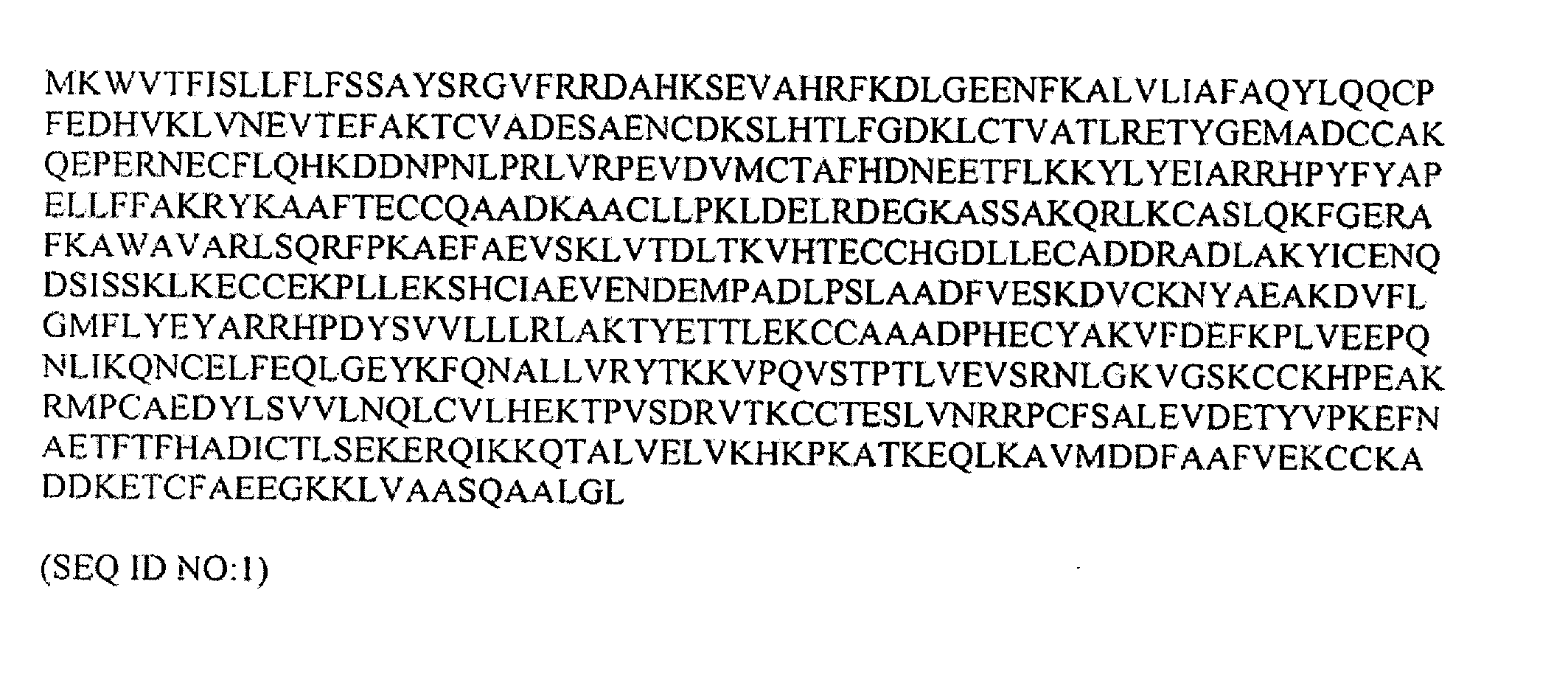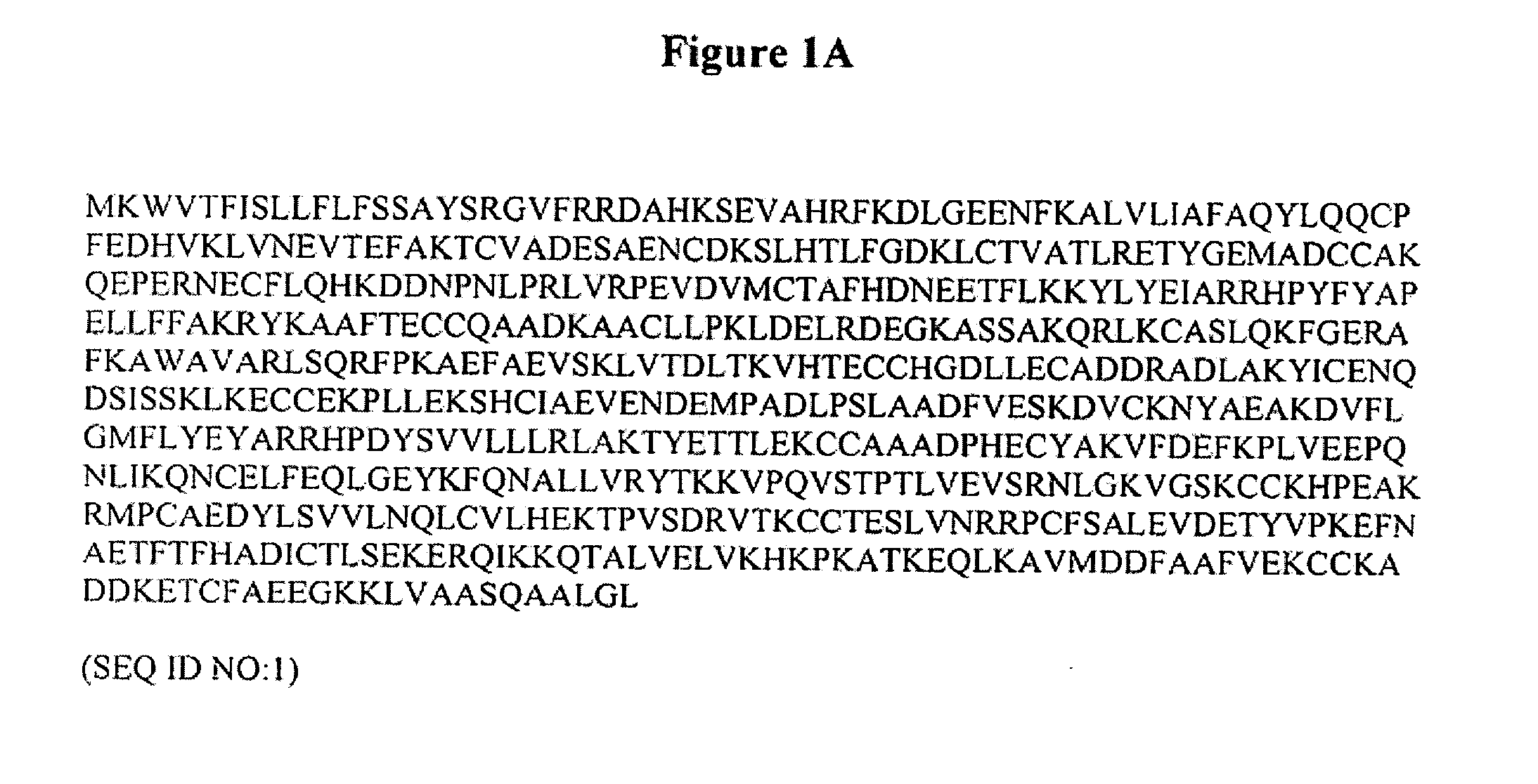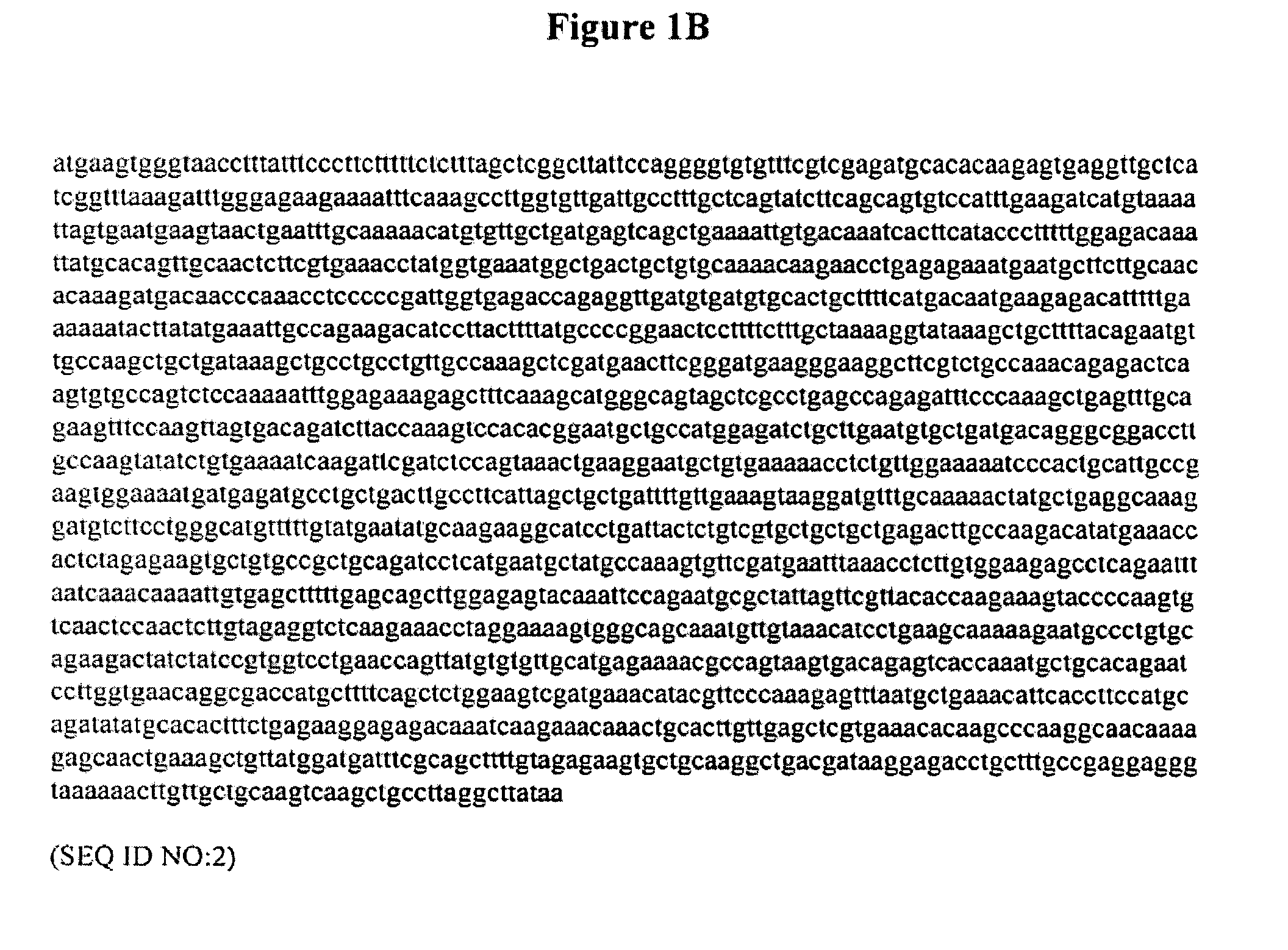Modified Human Plasma Polypeptide or Fc Scaffolds and Their Uses
a human plasma polypeptide and scaffold technology, applied in the field of human plasma polypeptides or fc molecules, can solve the problems of short half-life of scfvs in the circulation, limiting their therapeutic utility, and g2 fixing complements are very inefficient, so as to modulate the conjugation reaction conditions, rate or efficiency, and increase or decrease the binding strength.
- Summary
- Abstract
- Description
- Claims
- Application Information
AI Technical Summary
Benefits of technology
Problems solved by technology
Method used
Image
Examples
example 1
[0592]This example describes one of the many potential sets of criteria for the selection of preferred sites of incorporation of non-naturally encoded amino acids into hA. Using the criteria described below, the amino acid positions utilized for site-specific incorporation of p-acetyl-phenylalanine (pAF) into HSA are NO: 34, 82, 172, 301, 364, 505. Several HSA crystal structures were used to determine preferred positions into which one or more non-naturally encoded amino acids could be introduced: the coordinates for these structures are available from the Protein Data Bank (PDB) via The Research Collaboratory for Structural Bioinformatics at www.rcsb.org (PDB IDs 1A06, 1E78 and 1BMO). X-ray crystal structure information was used to perform solvent accessibility calculations on the HSA molecule, utilizing the Cx program (Pintar et al. Bioinformatics, 2002, Vol. 18, p 980). The solvent accessibility of all atoms was calculated and a composite Cx value for each amino acid residue was ...
example 2
[0593]This example details cloning and expression of a hA polypeptide with and without a non-naturally encoded amino acid in yeast. [Cloning of the albumin DNA into expression vector, transformation of yeast]
[0594]An introduced translation system that comprises an orthogonal tRNA (O-tRNA) and an orthogonal aminoacyl tRNA synthetase (O—RS) is used to express hA containing a non-naturally encoded amino acid. The O—RS preferentially aminoacylates the O-tRNA with a non-naturally encoded amino acid. In turn the translation system inserts the non-naturally encoded amino acid into hA, in response to an encoded selector codon.
TABLE 2hA, O-RS and O-tRNA sequences.SEQ ID NO: 1Human albumin amino acid sequencehASEQ ID NO: 2Nucleotide sequence encoding human albuminhASEQ ID NO: 3M. jannaschii mtRNACUATyrtRNASEQ ID NO: 4HLAD03; an optimized amber supressor tRNAtRNASEQ ID NO: 5HL325A; an optimized AGGA frameshift supressor tRNAtRNASEQ ID NO: 6Aminoacyl tRNA synthetase for the incorporation of p-a...
example 3
[0613]This example details introduction of a carbonyl-containing amino acid and subsequent reaction with an aminooxy-containing PEG.
[0614]This Example demonstrates a method for the generation of a hA polypeptide that incorporates a ketone-containing non-naturally encoded amino acid that is subsequently reacted with an aminooxy-containing PEG of approximately 5,000 MW. Each of the residues 17, 34, 55, 56, 58, 60, 81, 82, 86, 92, 94, 111, 114, 116, 119, 129, 170, 172, 173, 276, 277, 280, 297, 300, 301, 313, 317, 321, 362, 363, 364, 365, 368, 375, 397, 439, 442, 495, 496, 498, 500, 501, 505, 515, 538, 541, 542, 560, 562, 564, 574, 581, identified according to the criteria of Example 1 (hA) is separately substituted with a non-naturally encoded amino acid having the following structure:
[0615]The sequences utilized for site-specific incorporation of p-acetyl-phenylalanine into hA are SEQ ID NO: 1.
[0616]The hA polypeptide variant comprising the carbonyl-containing amino acid is reacted wi...
PUM
| Property | Measurement | Unit |
|---|---|---|
| molecular weight | aaaaa | aaaaa |
| dissociation constant | aaaaa | aaaaa |
| molecular weight | aaaaa | aaaaa |
Abstract
Description
Claims
Application Information
 Login to View More
Login to View More - R&D
- Intellectual Property
- Life Sciences
- Materials
- Tech Scout
- Unparalleled Data Quality
- Higher Quality Content
- 60% Fewer Hallucinations
Browse by: Latest US Patents, China's latest patents, Technical Efficacy Thesaurus, Application Domain, Technology Topic, Popular Technical Reports.
© 2025 PatSnap. All rights reserved.Legal|Privacy policy|Modern Slavery Act Transparency Statement|Sitemap|About US| Contact US: help@patsnap.com



